Duncan Green's Blog, page 103
January 18, 2018
Survey Results: Who reads FP2P? What jobs do you do? How would you like to improve it?
Late last year, 350 or so of you were kind enough to fill in an FP2P reader survey, so it’s time to feed back the results (big thanks to Amy Moran for doing the leg work).

Just to annoy the people who keep count of how often I use this cartoon
As well as being a useful snapshot, it’s also interesting to compare it to the previous reader survey from 2012 (I know how many of these things there are out there, and try not to do it too often).
Where do you live? Still overwhelmingly Northern, although within that, there’s been a shift from Europe to North America. This is one of the blog’s biggest challenges over the next couple of years, and we have some very exciting ideas – watch this space. The geographical spread of readers (rather than survey respondents) is not quite so bad, according to Google Analytics: 41% European; 27% Americas; 15% Asia and 10% Africa. On the other hand, how many of the readers in the South are actually expats?
What jobs do you do? Getting on for half of you are NGOers and/or activists (although I seem to be losing the attention of Oxfam colleagues – a lot more readers from other NGOs these days). The bulk of the rest are from academia or official aid sector – not much change there.
How old are you? The blogging audience seems to be maturing along with the medium. The biggest cohort of readers is still 25-34, but there has been a striking shift towards older readers in the last 5 years. I think that is probably accounted for largely by people themselves ageing, rather than young’uns dropping out, or oldies joining, but if more stats-literate people than me want to check that conclusion, that would be great (e.g the evolving subject matter of the blog could also affect the demographics)
What’s the gender breakdown? A small, but worrying shift in gender balance from slightly tilted towards women in 2012 (55%) to the reverse in 2017 (45%). Will feed it into the post #sausagefestgate reflection.
What do you like to read? Huge changes since 2012, and I am not at all sure what to make of the results. The top 3 areas now are original articles, links I liked and reporting on other organizations’ research. In 2012 they were less about Oxfam, more about Oxfam (!) and videos. That suggests the readership has become more wonky, but I’d be interested in other interpretations.
Couple of surprises:
Given my tendency to verbosity and weird English humour, I was relieved that a sizeable proportion of the readership (27%) do not have English as a first language, a third of whom (9%) occasionally struggle with my (ab)use of the language. Will try and remember that in future.
Only 10% of you read the blog on your phones (laptops/PCs = 50%). Also surprised by importance of email subscription accounts – nearly 30% of readers.
Your Comments and Impressions. I’ve read through the hundreds of additional comments, and (massive selection bias, I know), readers seem very happy with the way the blog is currently working. If anything, the tone feels more positive than in 2012 – maybe the blog and its audience are settling down together, and those who didn’t really like it have found better alternatives?

and another
As for what to change, reading through the 230 suggestions reminded me of sitting in an Oxfam policy paper discussion – everyone wants to add a new issue, while cutting the length (or in this case, reducing the number of posts). Generally, people like the magpie scatter of themes, but a few requests emerged – more posts on development practice ‘from the field’; more diverse voices, especially from the South (we’re working on that). There’s also a request for more non-text content and easier ways to access the archive of past FP2P posts (we’re working on those too).
And thanks to whoever said they wanted to hear more about my ‘sense of nagging inadequacy on multiple levels’. Don’t encourage me! I also appreciated ‘Please make Duncan use pronouns!’ Once I’ve worked out what a pronoun is, I’ll come back to you.
Finally, do those of you who said ‘please write fewer posts, we can’t keep up’, I’ve been trying, I really have, but I just can’t do it. Sorry.
Huge thanks to everyone – really appreciate both the affirmation and the advice. There are loads of other good suggestions which I haven’t been able to include here – we’ll be mulling them over in the coming months.
FP2P hits its 10th anniversary this year (so far, over 2.200 posts, 1.6 million words and 11,000 comments – jeez). The readership seems to have levelled out at about 300,000 ‘unique visitors’ per year, according to Google Analytics, and judging from this survey, I’m deeply glad that it has such devoted and thoughtful readers.
And for the truly geeky/obsessive, here are the results spreadsheet and summary of (anonymised) comments. Let me know if you dig up things we’ve missed.

January 17, 2018
Coalitions and Compliance: The Political Economy of Pharmaceutical Patents in Latin America. Book Review.
Back in the early noughties, I was an NGO trade wonk, prowling the corridors of the WTO and having a fun time at a  series of highly theatrical biannual ‘ministerials’ (Seattle 1999 (collapse), Doha 2001 (trade talks launched), Cancún 2003 (another collapse)). Over the course of those campaigns, we grew increasingly vociferous about the need for developing countries to retain ‘policy space’ – the ability to decide their trade policies in accordance with their own needs, rather than some edict from Geneva or Washington. Not surprisingly, developing country delegates lapped it up.
series of highly theatrical biannual ‘ministerials’ (Seattle 1999 (collapse), Doha 2001 (trade talks launched), Cancún 2003 (another collapse)). Over the course of those campaigns, we grew increasingly vociferous about the need for developing countries to retain ‘policy space’ – the ability to decide their trade policies in accordance with their own needs, rather than some edict from Geneva or Washington. Not surprisingly, developing country delegates lapped it up.
But we never thought much about what was likely to happen inside that space – would governments use all the leeway they had, or simply do what the World Bank or US Trade Representative told them to do?
A new book by my LSE colleague Ken Shadlen sheds some light on the question we never asked. He looks at how Latin America’s three big – Argentina, Brazil and Mexico, reacted to the intense pressure from the US and its allies to introduce patent rules on drugs.
The policy tsunami around patents was unstoppable. By the mid-2000s, all but the very poorest developing countries had introduced pharmaceutical patents. But the story doesn’t end there. What Ken explores is what happened next – what determined the way patents were introduced and then revised in the three countries?
The behaviours were very different: Argentina went for minimalist compliance, introducing parallel defensive laws and regulations to try and help local firms stay dominant in the sector. Brazil opted for a ‘neo-developmentalist’ approach, jumping into innovation and tech upgrading to try and stay ahead of the game. Poor old Mexico simply rolled over, embracing patent rules with all the zeal of a convert, effectively wiping out its domestic companies.
The origins of the divergence lie in domestic politics in the 3 countries. The decisive players in all three countries were local companies, presidents, health ministries and the US ‘pharmaceutical-government complex’ (my words not Shadlen’s).
In Argentina, President Carlos Menem was eager to curry favour with the US and tried to ‘over-comply’ on patent rules. But he failed, blocked by strong Argentine drugs firms who worked with their contacts in the health services and retail sector to set up a powerful defensive coalition.
 At the other extreme, Mexico’s president, Carlos Salinas, was roughly on the same page as Menem, but got his way because Mexico was that much more dependent on the US. In addition, NAFTA was being negotiated at some crucial points of the process, and the local pharmaceutical sector allowed itself to be bought off with some favourable government purchasing rules within NAFTA, which proved not enough to prevent the local sector’s extinction.
At the other extreme, Mexico’s president, Carlos Salinas, was roughly on the same page as Menem, but got his way because Mexico was that much more dependent on the US. In addition, NAFTA was being negotiated at some crucial points of the process, and the local pharmaceutical sector allowed itself to be bought off with some favourable government purchasing rules within NAFTA, which proved not enough to prevent the local sector’s extinction.
In Brazil, like Mexico, the domestic pharmaceutical sector was pretty weak, but it found some important allies among social movements, NGOs and legislators at a time when the Left was resurgent (leading to Lula de Silva becoming president at the head of a Workers Party government in 2003). An HIV/AIDS crisis further strengthened the hand of reformers in revising patent rules to ensure access to vital medicines.
The impacts of the first stage of adoption then shaped the second stage of revision: the level of divergence between the three countries narrowed – after all, they all had some kind of patent rules now. But there was still elbow room, and the relative political strengths of the domestic industry, government, health ministry, trading partners and civil society are still being played out in patent politics.
Shadlen is struck by the limitations on Presidents’ ability to impose their will, either when the spotlight is on, in the first stage of adoption, but even in the lower profile work of revising regulations in the second stage. It brought to mind Karl Marx’s wonderful line ‘Men make their own history, but they do not make it as they please; they do not make it under self-selected circumstances, but under circumstances existing already, given and transmitted from the past. The tradition of all dead generations weighs like a nightmare on the brains of the living.’
In a second stage, countries adapt the rules in light of their experience of adoption. They typically opt for a mix of 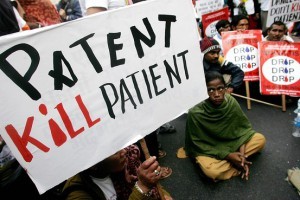 ‘tailoring’ the rules and ‘aspiring’ to modernize and innovate. Shadlen likens it to being given a new set of clothes: you can either adjust the clothes (tailoring), or you adjust yourself by going to the gym (aspiring). Of the three, Brazil has been the keenest gym monkey, but this comes at a political cost – aspiring undermines tailoring: as pharma companies seek to take advantage of government innovation funds etc, they become less interested in tailoring the rules and protecting policy space.
‘tailoring’ the rules and ‘aspiring’ to modernize and innovate. Shadlen likens it to being given a new set of clothes: you can either adjust the clothes (tailoring), or you adjust yourself by going to the gym (aspiring). Of the three, Brazil has been the keenest gym monkey, but this comes at a political cost – aspiring undermines tailoring: as pharma companies seek to take advantage of government innovation funds etc, they become less interested in tailoring the rules and protecting policy space.
Ken’s wider point is on how globalization interacts with national politics. Yes, globalization creates pressures for all countries to converge towards more or less similar rules, but ‘Persistent differentiation in the context of overarching convergence and not uniformity, is the hallmark of globalization’.

January 16, 2018
What’s your link to bereaved Kenyan mother, Judith Amoit?
Guest post from Matthew Spencer, Oxfam’s Director of Campaigns, Policy and Influencing (@spencerthink) 
Judith Amoit, a 27 year-old policewoman hit the Kenyan news last year when she lost her twins shortly after giving birth prematurely in the Nairobi West hospital. She was prevented from leaving the hospital to bury her children because she couldn’t pay the £20,000 bill. Judith was forced to appeal via the media to ‘well-wishers’ to help her pay her debt so that she could be released and retrieve her children’s bodies from the mortuary.
Judith sought care in a private hospital. Had free, quality, public healthcare been available, Judith would have been very unlikely to seek treatment privately. Free, public maternity services in Kenya do not include emergency surgery, which is one reason why detention in private hospitals due to unpaid bills is common.
It’s a familiar picture in the developing world, but Kenya ‘s burgeoning economy ought to be able to support free, public universal healthcare. The Kenyan constitution has enshrined the right of every citizen to access health care and attain the highest available standard of health. So why is it failing to deliver?

Judith Amoit
The most critical reason is the Kenyan government’s low spending on healthcare. Kenya spends just 6% of its budget on health. Another factor is the current unchecked growth of the private healthcare sector, siphoning scarce resources away from public systems, facilitating their stagnation and decline.
But it’s also because despite a growing economy and a growing population, Kenya’s tax income is flatlining. The countries which have made the most progress towards Universal Health Coverage have prioritised spending on health through general taxation. Yet Kenya is estimated to be losing $1.1bn every year to corporate tax incentives and exemptions – nearly twice its health budget in 2015/16
Kenya’s financial choices have resulted in a maternal death rate worse than that of many poorer or more fragile states. In the developed world, an average of one in 4,900 mothers will die from maternal causes during their lifetime. In Kenya, it’s a staggering one in 42. One in 42 mothers.
Earlier this month Oxfam produced an x-ray of the Kenyan tax system and an action plan to show how the government could begin to address the structural inequalities limiting the provision of pro-poor public services. Kenya’s economy is dynamic – it’s been growing at around 6% a year since the financial crisis of 2008, and it could be a middle-income country by 2030 – but it’s also dysfunctional. Kenya’s economy is the most unequal economy in the region which is creating new barriers to its fight against poverty. The wealth of Kenya’s richest 8,300 people equates to the combined wealth of the poorest 44 million. Many cannot afford hospital fees, and the tragedy of Policewoman Judith Amoit is not an isolated case. An estimated 2.8 million Kenyans fall into poverty or remain poor due to ill health each year.
My own personal link to Judith is the UK Chancellor (Finance Minister) Phillip Hammond. Hammond is the British representative on the board of the IMF, which is responsible for reviewing Kenya’s economic policy. I doubt he’s aware of it, but even the IMF, famously hawkish on public spending, recommends that the Kenyan government increase health investment. Hammond is also our representative on the EU Economic and Financial Affairs Council, which has just agreed a that are required to reform their ‘harmful’ tax policy. One of these tax havens is Mauritius, which markets itself to international companies as a ‘gateway to Africa’. Mauritius has a tax treaty with Kenya that allows companies investing there to pay less tax, thus depriving the Kenyan economy of revenue for public spending on services like healthcare.
representative on the board of the IMF, which is responsible for reviewing Kenya’s economic policy. I doubt he’s aware of it, but even the IMF, famously hawkish on public spending, recommends that the Kenyan government increase health investment. Hammond is also our representative on the EU Economic and Financial Affairs Council, which has just agreed a that are required to reform their ‘harmful’ tax policy. One of these tax havens is Mauritius, which markets itself to international companies as a ‘gateway to Africa’. Mauritius has a tax treaty with Kenya that allows companies investing there to pay less tax, thus depriving the Kenyan economy of revenue for public spending on services like healthcare.
So my link is either a hop and skip from Hammond via the IMF to the Kenyan health minister to the health system that saw a grieving Judith Amit imprisoned in hospital, or it’s a hop, skip and a jump from the UK Chancellor via the EU commissioner chasing Mauritius, to the income of the Kenyan government and the budget of the same health minister. If you’re reading this as a British voter then your MP puts you one step from Hammond and either financial chain.
The question of what we can all do to support the many citizens in Kenya and beyond who are seeking decent healthcare and education is something we will address in the next stage of Oxfam’s inequality campaign, but following the money will be at its heart. The world may feel more partitioned as nationalism grows, but we are all connected by the hard wires of global finance. We are never more than a few steps from the financial decisions affecting any other citizen in the world.

January 15, 2018
Campaigning around Elections: Some smart South-South learning
Just before Christmas I eavesdropped on a fascinating conversation between Oxfam’s teams in Peru and South Africa

The Good Old Days? South Africa in 1994
(all nationals, not a white man in shorts to be seen). The topic was election campaigning, with Oxfam South Africa currently designing its strategy for the 2019 elections in a state of extreme uncertainty about the state of SA politics (when we spoke, Cyril Ramaphosa had just been chosen as the new head of the ANC).
From Peru, Alejandra Alayza talked us through their election strategy, some of the highlights of which were:
– A combined focus on youth and content. The Peru team found that a funky, social media based approach to election campaigning works (check out this website), but only if there is solid content behind it. So they built alliances with investigative journalists and academics, resulting in some excellent, and substantive work around state capture by mining interests and others.
– Convening and brokering: As an INGO, Oxfam tries hard to avoid going it alone (cue accusations of imperialism, sucking up the oxygen from local organizations etc). In any case, in most countries it is too small to have much impact, but it can play a role in pulling together a disparate group of players on issues such as inequality and trying to find common ground for joint work.
– Critical Junctures are a given: electoral politics is never smooth, so a lot hangs on your ability to spot and maximise windows of opportunity, which are often short-lived. Relationships with decision makers are essential, but so are political smarts.

She lost. But her Dad’s been pardoned anyway.
– The Peru team put a huge amount of energy into the 2016 national elections, but now wish they had thought more about the morning after. A single election seldom changes the kinds of structural problems that underpin Peruvian inequality, so it is perhaps better to see them as part of a wider effort to shift public debate. In the South African case, the coming months will tell whether the best bet for civil society is to press for reform within the ANC, or spread its bets and concentrate on the kinds of political coalitions that will become more prominent as the ANC declines (see below).
In the discussion that followed, some interesting questions arose to which we didn’t have answers – please step forward FP2P hivemind and give us your thoughts (preferably with references – the rest of Oxfam is evidence-based, even if I’m not):
Are coalition governments easier/harder to influence, or just different? With the rise of coalition governments at subnational level in South Africa, NGOs are having to learn a new way of working. Some NGOs say it’s easier to have influence (smaller players in coalitions may be more open, more in need of analysis, or have disproportionate influence over their coalition partners). Others tell me it’s harder because all the negotiations are internal, and no-one cares about civil society. What do we know about how to do advocacy with coalition governments at any level?
What aspects of inequality worry elites? A decade ago, IDS published some fascinating research on elite perceptions of poverty and inequality, based on interviews with rich people in South Africa and four other countries. The researchers found that some aspects of poverty (eg education) offended elites, and made them want to take action, whereas others (eg health) did not. Surely we must know a lot more about this by now, in which case what does it tell us about how best to construct win-win anti-inequality coalitions with fragments of the elite?
What campaign promises do governments keep, once they win an election? The standard activist lament

There has to be a better option than this
is that politicians never keep their electoral promises, but is it more subtle than that? Are there some promises that politicians are more likely to keep, for example those that don’t threaten their financial backers in the short term? How does the way issues are framed or raised affect their political prospects? How much does it matter whether the promise is in the manifesto, rather than improvised on the campaign trail?
This kind of cross-country exchange is exactly what INGOs should be doing more of – please help them with your thoughts and suggestions.
And here’s the Peru team’s very funky slides (mix of Spanish and English).

January 14, 2018
Links I Liked
 Blimey, that was quite a week. Here are a few things I managed to read in the eye of the #sausagefest-gate twitterstorm:
Blimey, that was quite a week. Here are a few things I managed to read in the eye of the #sausagefest-gate twitterstorm: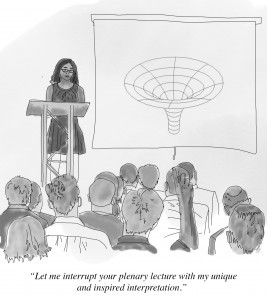
Men asking questions in seminars – the cartoon version
Raj Chetty in 14 charts: Big findings on opportunity and mobility in US.
Why other African states should not follow the “Rwandan model”. Nick Cheeseman piece ‘born of out my frustration with people telling me that things would be better in their country if only their president could “do a Kagame”’
From pachyderms to the Loch Ness Monster. The updated version of the famous elephant curve shows slower gains for much of the globe and more  concentration of growth in the top 1 percent.
concentration of growth in the top 1 percent.
Systematic review of ‘research impact’ literature finds it’s mainly a UK preoccupation, and in serious need of a bit of conceptual rigour
Making Sense of Complexity, wonderful explanatory graphic strip from Sarah Firth.
Alice Evans (a lecturer in Development Studies at Kings College) asks ‘how did Latin America buck the trend of rising income inequality? And what can we learn from this?’
Useful summary of what the ‘Building State Capability’ team at Harvard got up to in 2017.
Don’t forget to check your child’s homework.

January 11, 2018
Untangling inequalities: why power and intersectionality are essential concepts
Guest post from Fenella Porter, Oxfam’s Gender Policy Advisor
In the small and rather quirky Chapel of the House of St. Barnabas in Soho, a group of UK civil society representatives gathered together to have a conversation about inequality. After having been in many discussions recently which have struggled to extend the understanding of inequality beyond wealth, what was interesting in this forum was that wealth inequality was understood more as an underlying context. We were talking about inequalities (and there were many of them) in the context of austerity and increasing wealth inequalities in our society.
Essentially we were talking about intersectionality, which is a long word; and power, which is a big idea. If we are to understand inequality in the context of increasing wealth inequalities, then using an intersectional lens helps to explain how people experience inequality according to different – intersecting – aspects of their identity. No one, for example, is just poor, or just working class, or just a woman or just a disabled person. There is also no hierarchy of inequality, where some forms of inequality ‘trump’ others. Each person experiences a combination of inequalities differently, and these will shape how each person responds in different situations.
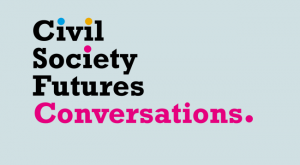 Whilst the focus was on austerity in the UK, there are important lessons for thinking about the intersection of different inequalities in every country and region. When we consider for example how important it is to campaign for publicly funded mental health services for young people, many in the room might consider this to be unproblematic. But using an intersectional analysis makes clear that peoples’ experiences of mental health services have been very different, for different communities. Black and Minority Ethnic (BAME) communities in the UK, for example, have experienced mental health services as sites of discrimination and crisis. Migrant communities also have a different experience of public institutions such as health services, with immigration status a crucial factor in peoples’ health-seeking behaviour. The gendered nature of access to public institutions such as health services is also hugely important, as women’s access will depend not just on the presence of these services, but also on the quality of care they get, and the ‘informal’ power that might be exerted by being asked to communicate in an unfamiliar language, for example. In campaigning for public funds, in order not to increase the sense of discrimination some have felt in these ‘public institutions’, those of us advocating for continued public funding must also understand the experience of different communities and actively bring them into the conversation about what a publicly funded health service looks like and feels like for different communities.
Whilst the focus was on austerity in the UK, there are important lessons for thinking about the intersection of different inequalities in every country and region. When we consider for example how important it is to campaign for publicly funded mental health services for young people, many in the room might consider this to be unproblematic. But using an intersectional analysis makes clear that peoples’ experiences of mental health services have been very different, for different communities. Black and Minority Ethnic (BAME) communities in the UK, for example, have experienced mental health services as sites of discrimination and crisis. Migrant communities also have a different experience of public institutions such as health services, with immigration status a crucial factor in peoples’ health-seeking behaviour. The gendered nature of access to public institutions such as health services is also hugely important, as women’s access will depend not just on the presence of these services, but also on the quality of care they get, and the ‘informal’ power that might be exerted by being asked to communicate in an unfamiliar language, for example. In campaigning for public funds, in order not to increase the sense of discrimination some have felt in these ‘public institutions’, those of us advocating for continued public funding must also understand the experience of different communities and actively bring them into the conversation about what a publicly funded health service looks like and feels like for different communities.
And this brings us to the notion of power in civil society. The Civil Society Futures conversation recognised that civil  society itself is not a level playing field. Different communities and their organisations can exert and maintain power in their relationships with others, based on established ideas of privilege. Oxfam, for example, occupies a position of considerable power in the landscape of civil society, as a large, relatively well-funded organisation, with very high ‘brand value’. This power does not just manifest itself in financial terms. It is also a question of how knowledge and ‘expertise’ is attributed and claimed. There is real knowledge and understanding generated by small, community-based organisations, or perhaps organisations representing communities shaped by multiple inequalities, but this knowledge can often be overlooked or smothered in a relationship with larger organisations. It is crucial that we all understand that working in civil society partnership involves recognising and addressing the unequal power relationships between different civil society organisations, as well as in communities, and the broader context in which they are struggling to bring about change.
society itself is not a level playing field. Different communities and their organisations can exert and maintain power in their relationships with others, based on established ideas of privilege. Oxfam, for example, occupies a position of considerable power in the landscape of civil society, as a large, relatively well-funded organisation, with very high ‘brand value’. This power does not just manifest itself in financial terms. It is also a question of how knowledge and ‘expertise’ is attributed and claimed. There is real knowledge and understanding generated by small, community-based organisations, or perhaps organisations representing communities shaped by multiple inequalities, but this knowledge can often be overlooked or smothered in a relationship with larger organisations. It is crucial that we all understand that working in civil society partnership involves recognising and addressing the unequal power relationships between different civil society organisations, as well as in communities, and the broader context in which they are struggling to bring about change.
This is an aspect of the development landscape that concerns many smaller women’s rights organisations, for whom the funding landscape is becoming increasingly narrowly defined, and dependent on consortia relationships with much larger organisations who often do not have the same focus on how women might experience inequality differently. And so complexities like the different experiences of public institutions are rarely at the centre of the work of larger, more powerful, organisations. We do not (yet) actively seek that focus and that knowledge.
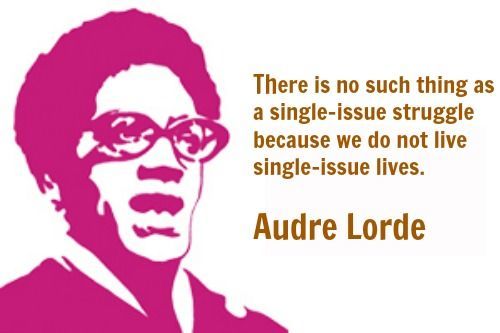 Civil society in the UK, and in other contexts, will in the future need to create a much better understanding of people, communities and the organisations which represent them – and how this understanding can help to change the way we work, and the way we represent the interests of poor and vulnerable communities. It will be particularly important to sharpen the focus on intersectionality when understanding how different aspects of inequality might shape the experience of public institutions, and civil society space. This conversation needs to continue to be central to our work as civil society organisations of whatever size and whatever power. It will be interesting to see what emerges.
Civil society in the UK, and in other contexts, will in the future need to create a much better understanding of people, communities and the organisations which represent them – and how this understanding can help to change the way we work, and the way we represent the interests of poor and vulnerable communities. It will be particularly important to sharpen the focus on intersectionality when understanding how different aspects of inequality might shape the experience of public institutions, and civil society space. This conversation needs to continue to be central to our work as civil society organisations of whatever size and whatever power. It will be interesting to see what emerges.

January 10, 2018
The Perils of Male Bias: Alice Evans replies to yesterday’s ‘Sausagefest’
Yesterday’s post on Stefan Dercon‘s lecture got a lot of hits, but also some slaps for its perceived male bias. In response,  Alice Evans (@_alice_evans, who memorably described Stefan’s list of top development thinkers as a ‘sausagefest’) put together this corrective account of women’s scholarship on development.
Alice Evans (@_alice_evans, who memorably described Stefan’s list of top development thinkers as a ‘sausagefest’) put together this corrective account of women’s scholarship on development.
Across the world, we tend to venerate men as knowledgeable authorities. These gender stereotypes are self-perpetuating: by paying more attention to their ideas and analysis, citing their work more frequently, we reinforce widespread assumptions of male expertise. We also blinker ourselves to alternative perspectives. This is self-defeating – if we’re trying to understand complex problems.
So, upon popular request (well, 3 people), here are five big problems in international development, plus female scholarship to learn from.
Poor Governance: demotivated, despondent bureaucrats, pursuing private interests, rather than public service
In response, the international development community has championed: state cut-backs; anti-corruption initiatives (monitoring receipts); and financial incentives.
However, such measures are not always effective. The latest consensus is that state capabilities are strengthened via learning by doing, enhancing bureaucrats’ autonomy, and conveying appreciation (such as via Rwanda’s imihigo  ceremonies).
ceremonies).
But this is not new. Two decades ago, Judith Tendler analysed the drivers of improved governance. She found that public services improve when bureaucrats have autonomy and feel appreciated by managers. When the government publicly demonstrated admiration of their work, presenting prizes for good performance, workers felt valued, recognised, and sought to live up to these accolades.
It’s a pity her insights were not previously heeded. Ah, the perils of male bias…
Also superb scholars on governance include Merilee Grindle (critiquing the long list of normative requirements included in the ‘good governance’ agenda), Sue Unsworth (on the need to address the global causes of state fragility, and strengthen collective action); Tania Murray Li, and Yuen Yuen Ang (on directed improvisation).
On the governance of natural resources and collective action failures, try “Governing the Commons” by Nobel Prize winning Elinor Ostrom. [Yet apparently didn’t make the grade for yesterday’s blog..].
Economic Growth
From 1980–98, median per capita income growth in developing countries was 0%. These lost decades reflect the 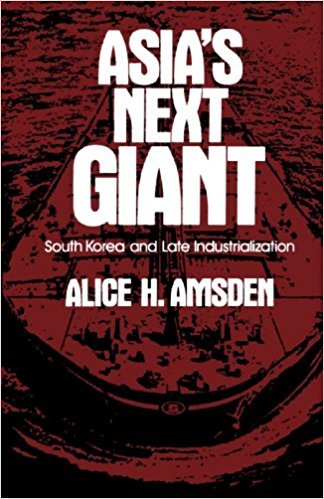 failed ‘The Washington Consensus’. Ah, if only we had heeded Alice Amsden’s insights: on how state-led industrialisation (substituting imports, supporting big firms, enabling economies of scale, but also exercising discipline) can generate jobs, growth and poverty reduction. Fortunately, industrialisation and state coordination is now on the global development agenda. A little bit late, perhaps…
failed ‘The Washington Consensus’. Ah, if only we had heeded Alice Amsden’s insights: on how state-led industrialisation (substituting imports, supporting big firms, enabling economies of scale, but also exercising discipline) can generate jobs, growth and poverty reduction. Fortunately, industrialisation and state coordination is now on the global development agenda. A little bit late, perhaps…
Incidentally, “Asia’s next giant: South Korea and late industrialization” has 9870 citations on Google Scholar, far more than anyone on Stefan Dercon’s list (save Amartya Sen). I’m surprised it was ignored…
Development economics has been further enriched by the rigorous research of Esther Duflo, Rachel Glennerster and Nancy Birdsall. Each have radically transformed how we study, think about, and work to address development problems.
Social Inequalities
A growing body of research indicates two key drivers of women’s empowerment: paid employment outside the home (building self-esteem, forging diverse networks, and collectively questioning patriarchal norms); and social mobilisation (strengthening collective capacities to protest structural inequalities). A real pioneer here is Naila Kabeer: inspiring us all with nuanced, qualitative and  quantitative analysis in London and Dhaka (transcending the usual Global North-South silos).
quantitative analysis in London and Dhaka (transcending the usual Global North-South silos).
See also Anne MarieGoetz and Rina Sen Gupta’s powerful critique of microfinance; Esther Boserup’s landmark text on “Woman in Economic Development”; Sylvia Chant’s work, challenging assumptions of deprivation in “Women Headed Households”; Maxine Molyneux’s “Mobilisation without Emancipation”; Frances Stewart on “Horizontal Inequalities” (how inequalities between culturally formed groups lead to violence and instability); Emily Oster on “The Power of TV: Cable Television and Women’s Status in India”; Ania Loomba on Postcolonialism; Anne McClintock on gender, race, class and imperialism; Andrea Cornwall, Frances Cleaver and Sarah White on whether ‘participation’ (a erstwhile donor fad) is necessarily transformative; and Bina Agarwal on “Gender and Land Rights in South Asia”.
Additionally, for those interested in why marginalised citizens might join a violent, fascist movement, I’d strongly recommend Atreyee Sen’s “Shiv Sena Women: Violence and Communalism in a Bombay Slum”. A superb ethnography – through which you might reflect on parallels between the US and Hindu Right.
Collective Resistance
In a time of growing authoritarianism, nativism, and inequality, we urgently need to learn about collective resistance. We need to understand the slow, incremental and often conflictual processes of social change: how marginalised people gain self-esteem; challenge hitherto unquestioned inequalities; demanding redistribution and recognition. Women’s scholarship is invaluable here.
Big hitters include Sonia Alvarez (“Engendering Democracy in Brazil”); Deborah Yashar (“Contesting Citizenship in Latin America: The Rise of Indigenous Movements”); Nancy Postero (“Now We are Citizens”); Pun Ngai (“Made in China”); Ching Kwan Lee (“Against the Law: Labor Protests in China’s Rustbelt and Sunbelt”).
China”); Ching Kwan Lee (“Against the Law: Labor Protests in China’s Rustbelt and Sunbelt”).
Decolonising Development
This must be a priority for us all: to end these normative visions of ‘good governance’; to stop pretending we (white, educated folk in the Global North) know best; and start learning from more diverse perspectives.
With 17,220 citations, Gayatri Chakravorty Spivak’s essay “Can the Subaltern Speak” is the pioneering work here. See also Lila Abu-Lughod (“Do Muslim Women Really Need Saving”).
These insights have greatly enhanced my analysis. We ignore women’s scholarship at our peril.
So go on then, who’s she forgotten?

January 4, 2018
$15bn is spent every year on training, with disappointing results. Why the aid industry needs to rethink ‘capacity building’.
The most read posts from 2017, in reverse order. Number 3 is a guest post from Lisa Denney of ODI. Check out the original if you want to read the comments.
Every year a quarter of international aid – approximately US$15 billion globally – is spent on capacity development. That is, on sending technical assistants to work in ministries or civil society, running training programmes, conducting study tours or exchanges, or supplying resources and equipment to help organisations function better. This is often referred to as ‘teaching men to fish.’ Rather than giving men (or, one might add, women) fish, teaching men to fish is seen to provide sustainable capabilities that will empower people and eventually negate the need for external support. Yet this task, far from being the technical transfer of skills, is fundamentally about social and political change.
In countries affected by conflict or fragility, this assistance is not just about improving development outcomes but is also expected to strengthen the state itself – because its very weakness is framed as both a cause and consequence of violence and underdevelopment. By defining state fragility as a problem of weak capacity, capacity development becomes the primary solution. It is also, conveniently, a problem that donors and NGOs can do something about – by providing capacity development programs.
 But despite the dominance of this idea, results in practice are frequently disappointing. This is borne out by six-years of research by the Secure Livelihoods Research Consortium (SLRC) on state capacity and how it tends to get built in eight countries (Afghanistan, the Democratic Republic of the Congo, Nepal, Pakistan, Sierra Leone, Sri Lanka, South Sudan and Uganda). While diverse, the studies point to a range of familiar challenges, including:
But despite the dominance of this idea, results in practice are frequently disappointing. This is borne out by six-years of research by the Secure Livelihoods Research Consortium (SLRC) on state capacity and how it tends to get built in eight countries (Afghanistan, the Democratic Republic of the Congo, Nepal, Pakistan, Sierra Leone, Sri Lanka, South Sudan and Uganda). While diverse, the studies point to a range of familiar challenges, including:
the limited toolkit of capacity development approaches (as one respondent in Sierra Leone noted ‘training, training, training – how much training does one person need?’);
the focus on technical aspects of service delivery, neglecting how power and politics are at the root of many problems that appear to be about capacity;
the neglect of alternative capacities outside of the formal realm or what Western notions of ‘capacity’ look like; and
a focus on tangible ‘units’ of a delivery systems (that is, individuals and organisations) and less on the system as a whole and how its parts interact.
Given that capacity development activities stretch back to at least the 1950s, why the frequent lament of poor results? (The SLRC synthesis report is far from the first study to point to these limitations).
The SLRC research finds many of the reasons are to do with the political economy of the aid industry itself – short timeframes, quantitatively-driven results reporting, risk aversion and an emphasis on technical rather than political and contextual skills and knowledge. But perhaps most fundamentally, and what all these factors derive from, is the fact that the aid industry turns fundamentally political processes of social and institutional change into projects – which are in turn cloaked in value-neutral technocracy. The problems become ones of limited equipment or resources, insufficient knowledge, weak coordination, poor monitoring, and so on, rather than about power, incentives and interests.
So, we see aid programmes attempting to improve service delivery in Afghanistan by building the technical capacity of village development councils, overlooking the incentives of local power brokers who hold the real sway in how services are delivered. Or programmes imply that malnutrition in Sierra Leone can be reduced by training mothers in infant and young child feeding, with little regard for the gendered power relations that mean women have little control over household finances and serve the most nutritious meal portions to older men. In South Sudan, there are examples of statebuilding being boiled down to workshops – often conducted in English – to address complex social transformations, such as local justice and peacebuilding. In all of these cases, the complexity, power and politics of the changes sought are sidestepped and turned into technical, more easily-delivered projects.
development councils, overlooking the incentives of local power brokers who hold the real sway in how services are delivered. Or programmes imply that malnutrition in Sierra Leone can be reduced by training mothers in infant and young child feeding, with little regard for the gendered power relations that mean women have little control over household finances and serve the most nutritious meal portions to older men. In South Sudan, there are examples of statebuilding being boiled down to workshops – often conducted in English – to address complex social transformations, such as local justice and peacebuilding. In all of these cases, the complexity, power and politics of the changes sought are sidestepped and turned into technical, more easily-delivered projects.
We would never think to use logframes and value for money calculations to manage the civil rights movement, for instance (although such programme management tools are used for all kinds of domestic social policy reforms). So why do we think that processes of social change can be projectized in countries affected by conflict or fragility? Is it because, while we recognise the politics inherent in some social change in our own countries, we strip it out from social change processes elsewhere and treat problems as ones of capacity alone?
To address these limitations, the SLRC argues that we need a re-politicisation of capacity development, acknowledging that we are ultimately interested in fostering social and political change. That might be by making service delivery more equitable, changing power relations in the household, or making governance arrangements more accountable. None of these are technical endeavours. Rather than shying away from this politics, we must put it front and centre and engage with it.
 To do so, we might start from building a nuanced understanding of how people use services in practice – recognising what drives people’s decision-making and the breadth of providers people rely on, often extending beyond the state. We must move beyond thinking about capacity as the tangible assets of individuals (eg: teachers) and organisations (eg: schools) and begin to think much more holistically about the capacity of systems. Ensuring health workers have good technical knowledge does not make a well-functioning health system on its own. Ensuring that staff also have good bedside manner, the trust of the community, access to reliable drug supply chains, are paid on time and so do not charge bribes or sell drugs on the black market, and so on also matter.
To do so, we might start from building a nuanced understanding of how people use services in practice – recognising what drives people’s decision-making and the breadth of providers people rely on, often extending beyond the state. We must move beyond thinking about capacity as the tangible assets of individuals (eg: teachers) and organisations (eg: schools) and begin to think much more holistically about the capacity of systems. Ensuring health workers have good technical knowledge does not make a well-functioning health system on its own. Ensuring that staff also have good bedside manner, the trust of the community, access to reliable drug supply chains, are paid on time and so do not charge bribes or sell drugs on the black market, and so on also matter.
Finally, we must be prepared to change our ways of working and thinking about the challenges faced in countries affected by conflict and fragility and move beyond the idea that capacity is the key constraint and therefore capacity development the natural answer. Rather, we need to bring to bear a much wider toolkit to support what are social and political processes of change. Ironically, this may begin by improving the capacity of development practitioners themselves to support such change processes.

January 3, 2018
Want to ensure your research influences policy? Top advice from a Foreign Office insider.
The most read posts from 2017, in reverse order. Here’s number 4. Check out the original if you want to read the comments.
The conference on ‘Protracted Conflict, Aid and Development’ that I wrote about on Friday was funded by the Global  Challenges Research Fund, a massive (£1.5bn) UK research programme that is funding, among other things, the LSE’s new Centre for Public Authority and International Development, where I’ll be putting in a day a week over the next few years.
Challenges Research Fund, a massive (£1.5bn) UK research programme that is funding, among other things, the LSE’s new Centre for Public Authority and International Development, where I’ll be putting in a day a week over the next few years.
Not surprising, therefore, that the topic of ‘research for impact’ kept coming up. A group of us at Oxfam are planning to put a paper together on this (we think we are quite good at it, sometimes), but in the meantime, here are some thoughts based on the conference.
Babu Rahman, a top research analyst at the British Foreign and Commonwealth Office (FCO), gave some commendably clear advice on what government officials need:
‘What we want from research is not ‘it’s complicated’ or ‘here’s the answer’, but comparative work highlighting a range of possible solutions, showing how particular tools and approaches have worked out. Most useful is understanding where something has/hasn’t worked and why. Then we can apply that to a new situation.
Statistical surveys alone are not that useful – they can generate false confidence or aversion. Multi-disciplinary approaches can be very helpful – even in helping government break down internal siloes. Case studies are really helpful, but limited in generating transferrable lessons – there is a perennial risk of recreate experiences from one place in another, as if they’re templates.
Three quick points on how to make research more useful to officials. All within the broad paradox that civil servants are assessed on their ability to simplify complex issues down to the key components necessary to make a decision, whereas academics’ value lies in illuminating complexity:
Make written work short but not dumb. That requires significant intellectual athleticism.
Avoid jargon and assumed knowledge. We don’t need lots of text on methodology
Structure is really important – go straight to your point in headlines and bullets.
 We’re seeing more academics producing abstracts and executive summaries, but they are too often abstracts rather than elevator pitches. Senior officials may have only 30 seconds to get hooked (or not) on what you are trying to say.
We’re seeing more academics producing abstracts and executive summaries, but they are too often abstracts rather than elevator pitches. Senior officials may have only 30 seconds to get hooked (or not) on what you are trying to say.
Attitude: be accessible – what’s often most helpful is when you can sit down with someone and talk to them about your problem. That requires trust and discretion. You have to be able to find the time and navigate the risk of compromise, and your role may not be acknowledged.
The single greatest risk of getting research into policy is that we won’t read it!’
Great stuff. I had a two minute pitch at the end of the conference, by which time most people were comatose, so for them (and anyone else who’s interested), here’s what I added to Babu in messages for academic researchers:
Above all, assume that no-one is going to read your paper. What else can you give them instead? A good exec sum? A blog? A killer fact?
It’s really hard to retain anything from reading a piece of research that has no overall narrative, but it is often equally hard for the researcher to identify a narrative that does not do violence to the research. Nevertheless, we have to try – road testing possible narratives ought to be something researchers spend a lot of time doing, especially towards the end of their research project.
Timing: How can researchers adapt their messages to the rhythm of decision-making set out in the policy
 funnel. Think about crises: Officials are most open to new ideas immediately after a crisis/scandal or other ‘critical juncture’, so how can researchers spot these windows of opportunity, drop what they’re doing if necessary, and feed ideas to the suddenly interested bureaucrats and pols? It’s not that easy because crises are also when officials/politicians are busiest and most harassed, so there’s no point in just sticking your old report in the post. The key is to cultivate relationships and trust in peacetime, so that when it all kicks off, you can pick up the phone or drop someone an email offering to help.
funnel. Think about crises: Officials are most open to new ideas immediately after a crisis/scandal or other ‘critical juncture’, so how can researchers spot these windows of opportunity, drop what they’re doing if necessary, and feed ideas to the suddenly interested bureaucrats and pols? It’s not that easy because crises are also when officials/politicians are busiest and most harassed, so there’s no point in just sticking your old report in the post. The key is to cultivate relationships and trust in peacetime, so that when it all kicks off, you can pick up the phone or drop someone an email offering to help.A distressing amount of academic research on aid treats practitioners as fools, or knaves, or both. Try assuming that practitioners are actually smarter than you are, but don’t have the time to do all that thinking and reading, so you are providing a valuable service. That should help avoid some of the plagues of straw men (‘aid does X’, ‘aid people think Y’, any sentence involving ‘neoliberalism’) which are so crude and silly that you immediately give up on the paper (as in this really annoying example)
Which leaves me with two big questions to ponder
Are funders set up to support this kind of research?
To what extent do academic career incentives encourage/prevent these ways of working?
I fear the answer to both is often pretty negative. Thoughts?

January 2, 2018
Aidspeak: some of your best/worst responses to my call for examples
I’m on holiday for the first week of 2018, trying to see the Northern Lights in Norway. In the meantime, here are the most-read posts from 2017, in reverse order starting with number 5. Here’s the original if you want to read the comments
Well you took a few hours to get started in response to Tuesday’s post, but then the floodgates opened and an avalanche of bullshit  crashed over me via blog comments and tweets (and yes, mixed metaphors were discussed). Cheers guys. Within the aid business, a few patterns appear:
crashed over me via blog comments and tweets (and yes, mixed metaphors were discussed). Cheers guys. Within the aid business, a few patterns appear:
Management obfuscation which sheds almost no light on what is actually being discussed
This from ‘NGO worker ant’ on ending a role in their organization:
“We…are now at a point where we need to adjust our capacities to advance the multi-dimensional pathways to diversify the [YYY] network…One of these changes includes rolling-off the [XXX] position, and embedding capacities to support our diversifying [YYY] aspirations under the [ZZZ position]…We will leverage our existing capacities for greater reach and greater coherence of our ongoing governance, membership, and broader diversifying ambitions, with no additional cost to these priorities.”
Or this from Rasmus:
“DFAT’s governance programme in Indonesia aims to: ‘For its first phase, KOMPAK supports the GoI to put in place improved systems, processes and procedures focusing on specific issues within its results areas towards achieving very specific high-level End of Facility Objectives (EOFOs) to which all its activities and projects contribute to.’ One of the projects under the programme is called: ‘Innovations for Service Delivery and Economic Empowerments’. I once read their ToC without becoming any wiser as to what the programme is actually about.”
Random scattering of portentous (but vacuous) words and jargon inflation
This from Poyrot: ‘…the aim being to purposefully valorize the land with strategic efficiency as a means of providing a sustainably effective solution to..’
 While Rick Davies dug out his excellent 2006 post on jargon inflation
While Rick Davies dug out his excellent 2006 post on jargon inflation
Metaphors: Overload or just plain worrying
From Anon:
“’The field of impact measurement in itself is undergoing a period of dramatic change, as others grapple with similar questions—how do we become astronomers of systems change able to study and understand far away movements and bodies that have a direct effect on what is near to us?; when we let go of the role of puppet master of change, how do we measure our contributions as servants of broader change processes, powerful as catalysts, yet humble in our awareness that it takes more than a village to change societies?’ – metaphor overload alert (astronomy, puppets, servants and villages)”
“‘We were very much ‘building the plane while flying it’ as we reimagined our planning process this year’ – understandable metaphor, until you really think through the implications of getting an unbuilt plane off the ground, or being in one!”
To which I would add a personal dislike from the transparency mafia: ‘sunlight is the best disinfectant’. Really? Definitely going to avoid any hospital that believes that……
But aid types cannot even get close to academics (or management consultants)
Alice Evans ‘sees your aidspeak and raises you academia’:
‘Someone with a PhD once read my paper and replied: “Is change ‘caused’ at the level of ideas or agents? You say interests are not a priori but then claim they are shaped by material circumstances? If it’s about ideas then is the relationship to agents dialectical or co-constituted? If it’s about material interests then where do our ideas about them come from?… I guess a simpler way to phrase the question is whether you think ontology is a priori to epistemology?’
And management consultants can give them a good run for their money. This from Rasmus:
‘Here is Maxwell Stamp’s attempt to describe ‘what we do':
‘Flexibility is essential to success, so we are always accommodating and responsive. But without ever allowing ourselves to compromise the integrity of the services we provide. All those services are customised, not commoditised, and include: Each of those sectors has a number of subsectors, each with its own disciplines and expertise. But even that is by no means the totality of the areas in which we have delivered impressive results. Because we rely on our grey cells rather than on black box solutions. So our skills are  readily transferable.’’
readily transferable.’’
How strong is the defence for Jargon?
Then of course there’s just plain nausea-inducing violence to the language of Shakespeare as in this from Shadrock:
“We verbalized a plan to chair a listening session and then share the contours of that back with leadership.”
Those responsible for these atrocities should check out (and maybe memorize) George Orwell’s 6 rules for writing good English.
Never use a metaphor, simile or other figure of speech which you are used to seeing in print.
Never use a long word where a short one will do.
If it is possible to cut a word out, always cut it out.
Never use the passive where you can use the active.
Never use a foreign phrase, a scientific word or a jargon word if you can think of an everyday English equivalent.
Break any of these rules sooner than say anything barbarous.
IDS’ Emilie Wilson did mount a slightly half-hearted defence of jargon. In response to a blogpost entitled 17 Development Cliches I’ll be Avoiding in 2017, she pointed out that what looks like jargon can be‘a handy short-cut behind which sits stacks of research, complicated concepts, collaborative (and frequently painful) deliberations….. (try describing “empowerment” in a tweet rather than just using #empowerment)’.
But perhaps the most disturbing observation came from Binagwaho Gakunju: ‘Do we use aidspeak so much that we don’t even hear it anymore, like smokers and cigarette smell?’
And sure enough, quite a few of my own pet phrases made an appearance: Problem Driven Iterative Adaptation; convening and brokering; space.’ Ouch.
Thanks everyone. Keep ‘em coming and hope Alice follows through with the idea of setting up a website for choice Academic nonsense.

Duncan Green's Blog
- Duncan Green's profile
- 13 followers





